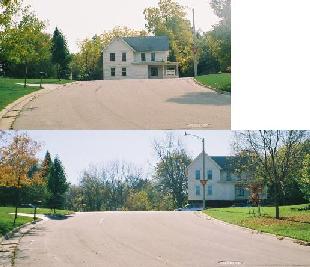
 |
Raising the house |

 |
The next day the building movers raised the house twelve feet above the basement grade to allow concrete work underneath. 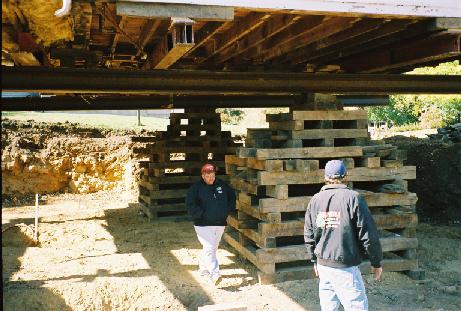 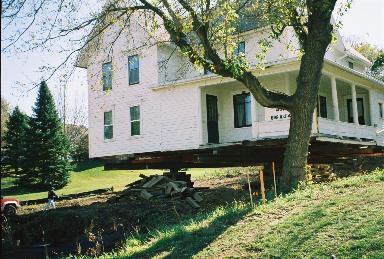
Once again unable to enter the house, we are relearning patience. |
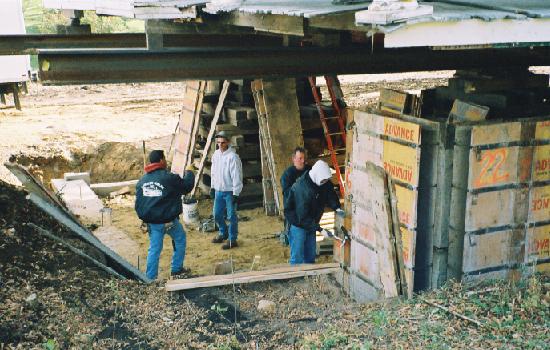 |
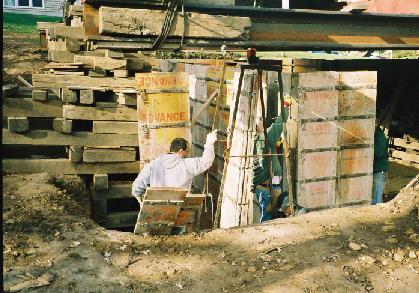
|
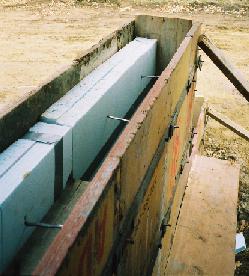 Oct. 20, a week after the building movers raised the house, the cement workers set up forms to hold the concrete for the basement walls. Inside some of the forms were styrofoam blocks to fill the space where masons will lay the stones which will line the exposed surfaces of the basement. The next day the rains started to increase, delaying the option to bring heavy cement trucks up into the slippery, exposed clay surface. Fortunately, all agreed that a cement truck sliding into the suspended house would be a bad thing. Losing hope for a dry spell, we asked the cementers to bring in the more expensive equipment which could pump the concrete into the forms from a distance. Friday, Oct. 24 they poured the basement walls. Saturday, Sunday and Monday set a new record for rainfall over three days. When the atmosphere finally cleared, we were pleased to find that the basement held up very well even though the soil hasn't been shaped yet to drain water away from the foundation. Only the deepest hole, exposed to the east of the house, collected water. (See the photo at right.) There was little erosion and the gravel basement floor stayed dry or drained soon after the rain ended! Yes, that's broken ice in the puddle, as we race the onset of winter to complete our "summer project." |
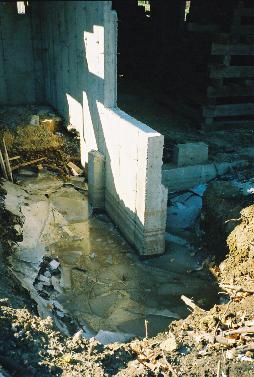 |
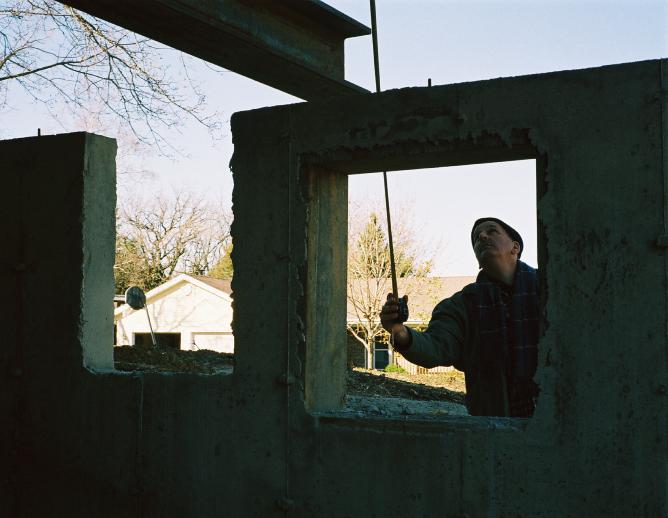
So, anyway, as our house remained hovering above its foundation, this man in the white suit landed and the war continued ...
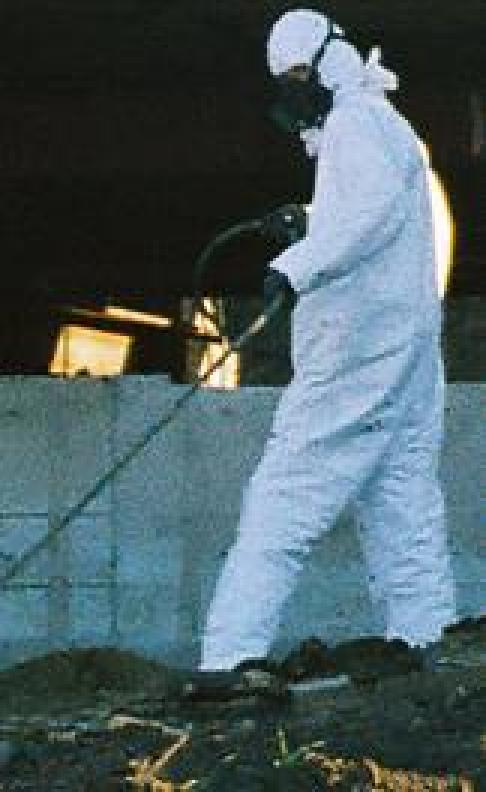
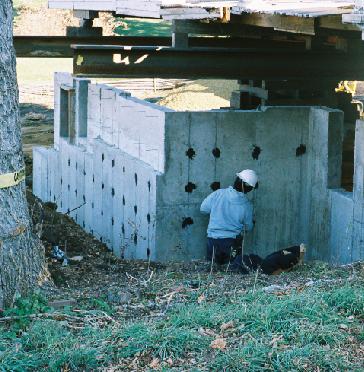 |
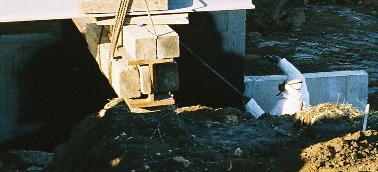
|
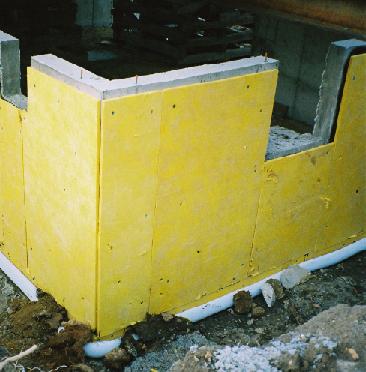 |
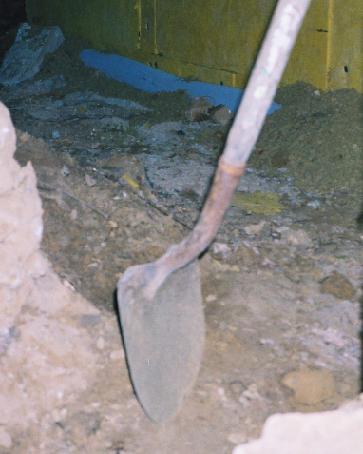 |
|
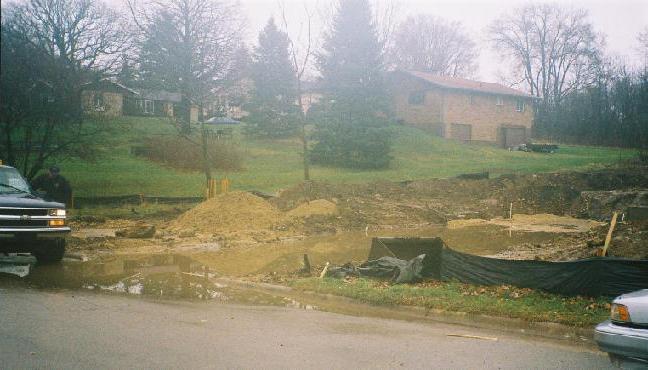 |
We're confident that raising the driveway to its final height, landscaping beside it and, most importantly, removing the silt fence barrier cloth which we've got covering the sewer beside the driveway opening in order to keep our topsoil from eroding into the storm sewers, will fix this water problem.